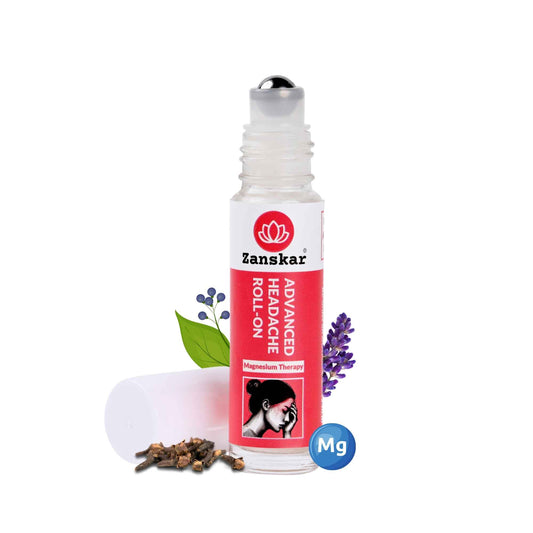
Everything You Need to Know About Repetitive Strain Injury (RSI)

Repetitive strain injuries (RSI) are not new. In fact, they were first described in 1700 by an Italian physician, Dr. Bernardino Ramazzini. He described over 20 categories of RSI after observing Italian industrial workers.
What is RSI?
A repetitive strain injury (sometimes referred as repetitive stress injury) refers to the gradual damage to the muscles, tendons, and nerves as a result of their repetitive use (hence the term). The most common forms of RSIs include carpal tunnel syndrome, tennis elbow, bursitis, and rotator cuff tendonitis.
Ok, but what is it all about?
Many people think of RSI as the same thing as Carpal Tunnel Syndrome. And although that is one variation of RSI, there are other symptoms and conditions that come under the umbrella of the term.
RSI actually refers to any of a number of problems you may get in your upper body caused due to repetitive movements or poor posture at work. It can affect different areas such as the arms, elbows, wrists, hands, fingers, neck and shoulder.
At present, RSI doesn’t just affect industrial workers. It can also affect people in any industry that involves a lot of repetitive work.
As its name suggests, the condition is aggravated by repetitive movements. Typically this might include clicking on your mouse repeatedly throughout the day. In fact, the average office worker clicks their mouse a staggering 5000 times a day. And clearly, that is not something we were designed by evolution to do!
But RSI isn’t just caused by using your keyboard. It can affect keen tennis players or golfers. Or it might even affect someone who does a lot of DIY.
Recognising the symptoms of RSI
Many typical injuries you might suffer have fairly obvious tell-tale signs such as swelling or bruising. But with RSI you often feel tenderness or pain but without any obvious visible signs.
RSI commonly affects the wrists, hands, forearms, elbows, neck, and shoulders. The symptoms of RSI may develop gradually but they could become constant and severe, affecting significantly your quality of life.
The most common symptoms of RSI include:
- Tenderness and/or pain in the affected joint or muscle
- Tingling or numbness
- Loss of sensation
- Loss of strength
- Sensitivity to heat or cold
- Stiffness
Who is at risk of getting RSI?
RSI can occur when you do repetitive movements. Those movements can cause your muscles and tendons to become damaged over time.
Some activities that can increase your risk for RSI are:
- stressing the same muscles through repetition
- maintaining the same posture for long periods of time
- maintaining an abnormal posture for an extended period of time, such as holding your arms over your head
- lifting heavy objects
- being in poor physical condition or not exercising enough
Previous injuries or conditions, such as a rotator cuff tear or an injury to your wrist, back, or shoulder, can also predispose you to RSI.
Needless to say, Desk jobs are one of the leading occupations whose workers are at risk for RSI.
How do I prevent repetitive strain injury in the workplace?
The first step to reducing RSI risks are as simple as altering the workers working position or shift pattern to enable them to work in a less awkward position and to take the necessary breaks from the task.
If this isn’t practical, find a way to reduce the particular activity as much as possible. And if your symptoms are triggered by a desk-bound job, focus on following the best practices for workplace ergonomics.
Cold treatment with ice-packs, and ironically enough, heat treatments have both been known to help alleviate symptoms. However, for a more long-term programme of rehabilitation, it is highly recommended that you consult with an expert who will be able to help you to stretch and strengthen any affected muscles with safe gentle exercises. You can download the Zanskar physiotherapy app for this.
The initial treatment for RSI symptoms is conservative. This may include:
- RICE, which stands for rest, ice, compression, and elevation
- topical anti-inflammatory relievers
- exercises, which may be prescribed as part of a physical therapy treatment plan
- stress reduction and relaxation training
- wrapping the area or securing it with a splint to protect and rest the muscles and tendons
Your outlook with RSI depends on the severity of your symptoms and your general health. You may be able to use conservative measures to modify your work routine and minimize pain and damage. Or, you may have to stop certain tasks at work for a while to rest the affected area. If other measures don’t work, your doctor may recommend surgery for specific problems involving nerves and tendons.
Learn More About Zanskar Health
If you have joint or muscle pain that makes it hard to move, Zanskar offers the most advanced full stack pain relief solutions for you.
Now available to purchase, Zanskar® Advanced Pain Care Products have a unique formulation of natural bioactive ingredients and provide lasting relief from muscle and joint discomfort that you can feel good about. Get your fix before stocks run out - buy now.
You can also gain access to therapeutic exercises and stretches for your condition by downloading the Zanskar Health physiotherapy mobile app. Additionally, you’ll have a personal care team to guide, support, and tailor our program to you, including behavioral and nutritional coaching.
Download our mobile app here 👉 download and track your exercise streak.
Medical Review: This article is written by Dr Nishtha Mittal (Senior Health Content Editor at Zanskar Health) and has been medically reviewed by the medical team at Zanskar Health. This article and its contents are provided for educational and informational purposes only and do not constitute medical advice or professional services specific to you or your medical condition.







